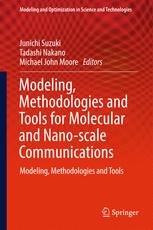

Most ebook files are in PDF format, so you can easily read them using various software such as Foxit Reader or directly on the Google Chrome browser.
Some ebook files are released by publishers in other formats such as .awz, .mobi, .epub, .fb2, etc. You may need to install specific software to read these formats on mobile/PC, such as Calibre.
Please read the tutorial at this link: https://ebookbell.com/faq
We offer FREE conversion to the popular formats you request; however, this may take some time. Therefore, right after payment, please email us, and we will try to provide the service as quickly as possible.
For some exceptional file formats or broken links (if any), please refrain from opening any disputes. Instead, email us first, and we will try to assist within a maximum of 6 hours.
EbookBell Team

4.4
32 reviewsThis book reports on cutting-edge modeling techniques, methodologies and tools used to understand, design and engineer nanoscale communication systems, such as molecular communication systems. Moreover, it includes introductory materials for those who are new to the field. The book’s interdisciplinary approach, which merges perspectives in computer science, the biological sciences and nanotechnology, will appeal to graduate students and researchers in these three areas.The book is organized into five parts, the first of which describes the fundamentals of molecular communication, including basic concepts, models and designs. In turn, the second part examines specific types of molecular communication found in biological systems, such as neuronal communication in the brain. The book continues by exploring further types of nanoscale communication, such as fluorescence resonance energy transfer and electromagnetic-based nanoscale communication, in the third part, and by describing nanomaterials and structures for practical applications in the fourth. Lastly, the book presents nanomedical applications such as targeted drug delivery and biomolecular sensing.